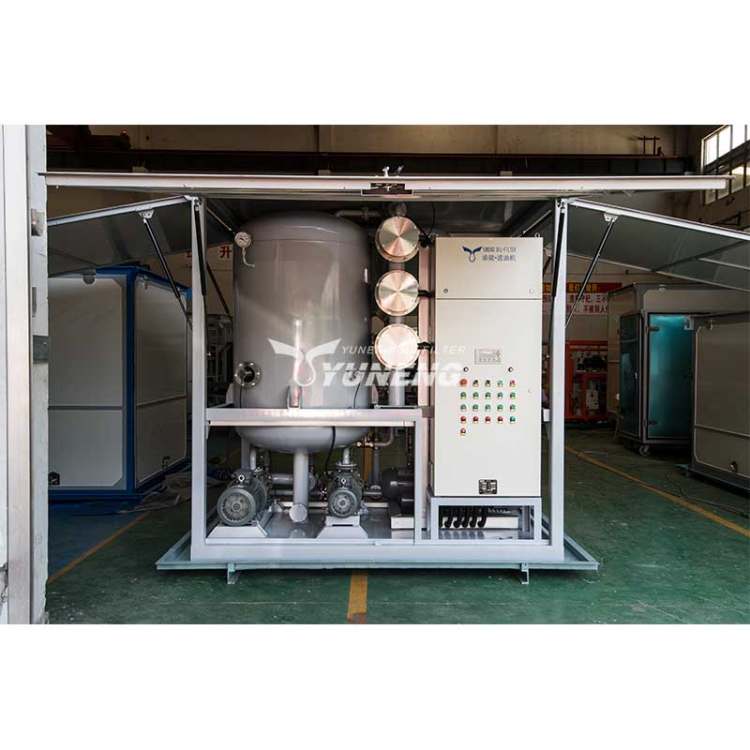Utmost of the slicking lube blending is a homogeneous admixture of liquid-liquid phases dissolved in each other; in some cases, there are also liquid-liquid phase systems that don't dissolve in each other, and after blending, the lubricant is mixed with the liquid-liquid phase. Forms a liquid-liquid dissipation or, when the lubricant cumulative is a solid, anon-homogeneous admixture or dissolution of the liquid-solid phase system. The number of solid complements isn't large, and ultimately answerable in each other, forming a homogeneous phase.
It's generally believed that the liquid-liquid phase system homogeneous mixing is a combination of three prolixity mechanisms.
Molecular prolixity. The transfer of substances caused by the relative stir of motes. This prolixity is carried out in the space of molecular scale.
Whirlpool Prolixity. When mechanical energy is transferred to a liquid material, the fluid at the interface of a high- speed fluid and a low- haste fluid is explosively sheared to form a A large number of maelstroms, performing from the transfer of matter due to the whirlpool splitting stir. This mixing process takes place in whirlpool-scale space.
Convective prolixity of the main body. Includes all matter transfer that isn't part of molecular or whirlpool stir but causes a large range of all liquids to circulate, similar as mixing The mass transfer process caused by convective rotation in the tank. This blending process is carried out in a large scale space.
The purpose of blending is to be suitable to acclimate the lubricant variety, ameliorate the lubricant quality, and eventually get the asked lubricant. And in this process, what system, what outfit to choose, what styles to use to make the blending effect better, also appears to be Especially important.
1, Mechanical mixing and blending
.
The amalgamated material is under the action of the kindler, forming the main convection and eddy current prolixity transfer, molecular prolixity transfer, so that the parcels of all accoutrements To achieve uniformity. The material in the tank will move in two directions when the kindler is rotating; one is the forward movement along the axis of the kindler, and the other is the forward movement along the axis of the kindler when it's hit by the wall of the tank. or the inhibition of the bottom of the tank, change the direction of its movement, after numerous changes of direction, the final conformation of roughly indirect inflow; second is along the kindler The indirect movement formed by the rotating direction of the pulp splint makes the material roll over, and eventually achieves the purpose of mixing unevenly.
2, Pump rotation shifting and mixing
.
Pump the material from the bottom of the tank continuously, and also return to the conciliation tank, under the action of the pump to form the main body of the convective prolixity and eddy current prolixity In order to ameliorate the blending effectiveness and reduce the energy consumption, the pump cycle blending system is constantly bettered in the factual product. In order to ameliorate the blending effectiveness and reduce energy consumption, the pump cycle blending system is constantly bettered in factual product.
3, Palpitation shifting blending
.
Palpitation mixing is to set the stylish palpitation frequence, detention time and pressure according to different accoutrements. By means of a set of special control bias on point and a collector plate installed in the reactor or blending tank, a important air inflow is generated. Stirring from the bottom up, top down, unevenly tuned in a veritably short period of time, speeding up and narrowing the response time to reach the Good product quality.
slicking canvas blending
Nonstop blending is to shoot the factors of the amalgamated slicking canvas, including the colorful base canvases and complements demanded, into the blending main pipe and mixer at the same time according to the proportion determined during product development, and the unevenly amalgamated canvas product will come out from the other end, and its physical and chemical indicator and use performance will reach the predetermined conditions, and the canvas product will be filled directly or entered into the finished canvas tank for storehouse.
Factors affecting the quality of blending
Influence slicking canvas blending quality of numerous factors, blending outfit blending effectiveness, blending element quality and so on all directly affect the blending of the Canvas Quality. Then the main analysis of the process and operation of the factors on the blending of the canvas quality after the impact.
1, the accurate dimension of factors
.
Accurate dosing is essential for both intermittent and nonstop compounding. Accurate metering is a guarantee that the factors are fed in the correct proportions. Accurate metering of the element inflow rate is essential for nonstop blending. Inaccurate metering of the inflow rate will affect in misalignment of the element proportions and therefore Affect the quality of amalgamated products.
2, the water content in the element
.
Factors containing water will have a direct impact on the turbidity of the mix and the appearance of the canvas, and occasionally beget the hydrolysis of some complements, and reduce the effectiveness of the use of complements, so it should be averted from mixing water in the factors.
3, the air in the factors
.
The presence of air in the element neutralization system is ineluctable and can be veritably mischievous to the mix. The presence of air may not only promote cumulative responses and deterioration of the canvas, but also lead to poor element metering due to the presence of air bubbles. Accurate, affect the correct proportion of factors.
4, the temperature of the conciliation element
.
To choose the applicable blending temperature, the temperature is too high may beget the oxidation of canvas and complements or thermal deterioration, low temperature factors of the fluidity of the factors can deteriorate and affect the effect, generally 55-65 ℃ is applicable.
5, the dilution of complements
.
Some complements are veritably thick, before use must be melted, adulterated, modulated into the right attention of cumulative masterbatch, else it may affect the uniformity of the mix, and may affect the delicacy of dimension, but cumulative masterbatch shouldn't be added to the diluent too much, so as not to affect the quality of the lubricant product.
6, the cleanliness of the blending system
.
The presence of solid contaminations in the blending system andnon-blending factors of the base canvas and complements are all pollutants to the system and can beget The quality of the amalgamated product is unacceptable, so the slicking canvas blending system should be kept clean. From an profitable point of view, the possibility of blending only one product in a system is extremely small, so the impurity of the system bynon-blended factors is a major concern. Inescapably, on the one hand, the factual product should try to clean up the adulterants, and on the other hand, analogous quality and variety of canvas should be arranged in a System blending to insure the quality of amalgamated products.
7, Mixing time
.
According to the size of the mixing kettle, the quantum of mixing accoutrements, hotting temperature, stirring mode and other reasonable to determine the shifting time, stirring time is too short, mixing isn't invariant enough; halving time is too long, energy consumption.


